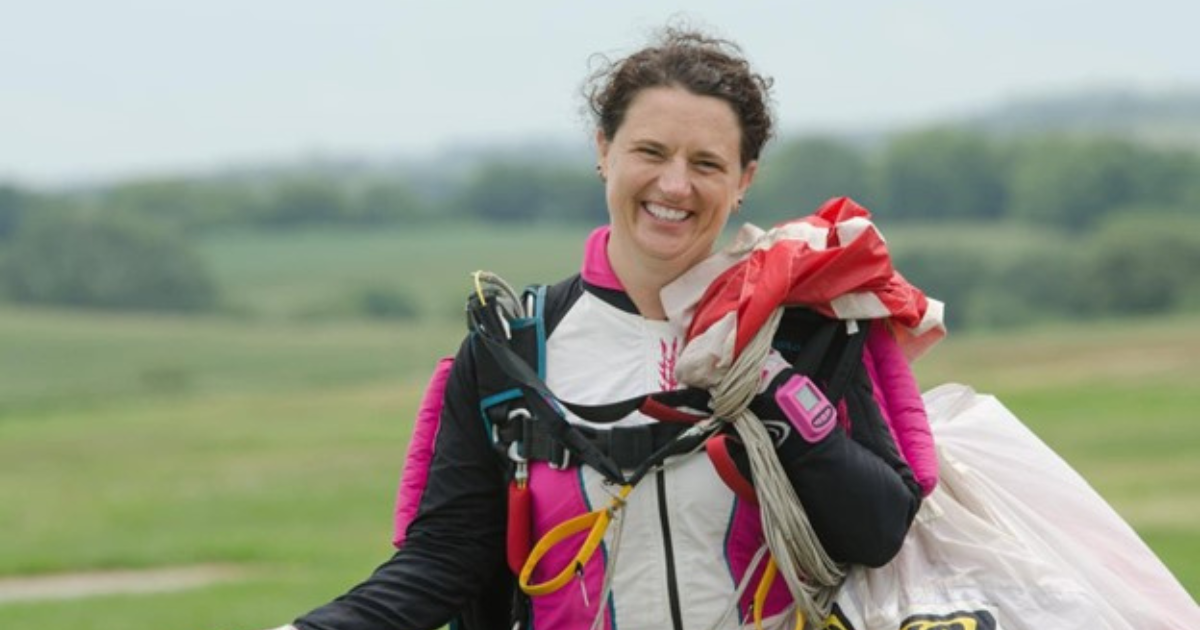LASIK surgery helps skydiving nurse soar to new heights

For Lori Bausch, RN, the decision to get LASIK surgery was life changing. The Nebraska Medicine float staff nurse and avid skydiver had considered the procedure for years before finally taking the leap.
"I'd been talking about LASIK for 20 years, and then I had a big birthday coming up, so I decided that was going to be my birthday present to myself," Bausch says. "Instead of taking a big trip or something, I decided to make it so I didn't have to wear glasses."
The right care team
Bausch's journey to better vision was unique. Five years ago, she was diagnosed with a brain tumor that required surgery. During a follow-up MRI, doctors found a second, smaller tumor on her optic nerve.
"That's how I met Dr. Thornton," Bausch says. "She's actually my neuro-ophthalmologist for my brain tumor on my optic nerve."
Ophthalmologist Ivey Thornton, MD, monitored the second tumor, which hasn't affected Bausch's vision. During one of her appointments, Bausch mentioned her interest in LASIK.
"We were talking about my brain tumor, and I'm like, 'Well, I'd really love to get LASIK. But I assume with this tumor I can't get it,' and she's like, 'Oh, no, I can do that. I'll hook you right up,’'" Bausch says.
Dr. Thornton brings special expertise to Bausch's case, having completed two fellowships – one in neuro-ophthalmology at Harvard University and another in complex cataract and refractive (LASIK) surgery.
"I'm very comfortable doing LASIK on someone who has other eye conditions," Dr. Thornton says. "I can discern whether or not LASIK may benefit the patient in the setting of other eye diseases."
Understanding LASIK
LASIK is one of several types of refractive surgery that uses a laser to reshape the cornea and correct vision problems.
"The cornea has five layers. The layer we need access to perform LASIK is the stroma, which is the middle layer of the cornea,” Dr. Thornton explains. "We make a flap, and then we lift up the flap to get access to the stroma. We are then able to use an excimer laser to change the shape of the cornea."
For nearsighted patients, surgeons flatten the center of the cornea. For farsighted patients, they flatten the periphery. For astigmatism, they flatten the affected meridian.
The LASIK experience
For Bausch, Dr. Thornton recommended monovision LASIK – correcting one eye for distance vision and one for near vision. This approach helps patients avoid reading glasses.
Dr. Thornton says patient input is essential when making these decisions. "I let my patients choose what they want after giving them options, rather than giving them one recommendation," she says. "That’s my approach because it's how I would want my doctor to treat me."
On the day of her procedure, Bausch was in and out of the clinic within an hour. Preparation for the LASIK procedure takes approximately 20 minutes, and the procedure itself takes around 10 minutes per eye.
"My friend drove me home afterward and I took a great nap,” Bausch says. “I woke up, and I could see. It was the weirdest thing ever."
Recovery from LASIK is typically quick. Patients use steroid drops for about a week to help reduce inflammation.
"On day one after LASIK, most people are like, 'Wow, I see so well,'" Dr. Thornton says. “Your vision actually continues to improve every day, as your eye heals.”
Life-changing results for active lifestyles
For Bausch, the benefits of LASIK go beyond everyday convenience. They've enhanced her favorite hobby: skydiving. With approximately 1,500 jumps over 15 years, Bausch is an experienced skydiver who serves on the board of the Lincoln Sport Parachute Club.
"I can see better, so I visualize the ground better," Bausch says. "As you're coming in to land, it's called a flare, and it's when you change the rate of the wing. And you do that at about 10 to 12 feet above the ground. I've been much more accurate in my landings because of that."
Bausch also appreciates the benefits of LASIK during training in wind tunnels.
"I went to a skydiving camp where I did an hour plus in the wind tunnel, and my eyes weren't all dried out. The last time I did tunnel time, I lost a contact in there," she says. "It was amazing because my sight was so much crisper than in my contacts."
Beyond skydiving, Bausch enjoys the freedom LASIK has given her for hiking, backpacking and daily life.
"I don't have to worry about breaking my glasses," she says. "When I don't want to get up for work early, I can just walk out the door. I don't have to worry about how dirty my glasses are.”
Not just LASIK: Multiple options available
Dr. Thornton encourages anyone interested in LASIK to consult a refractive surgeon – who specializes in LASIK and LASIK alternatives for vision correction surgery – even if you’ve been told previously that you are not a candidate.
"If you want LASIK, it's good to speak to a refractive surgeon directly to see if you're a candidate," Dr. Thornton says. "There is specific testing required to help determine if you are a LASIK candidate, and often this testing is not widely available in the community. We can also offer alternative surgeries to help correct a patient’s vision even if he or she is not a LASIK candidate.”
If a patient isn't a candidate for LASIK, there may be other vision-correcting options available, such as SMILE, PRK and others. The refractive surgery fellowship-trained surgeons at Truhlsen Eye Institute offer multiple alternative procedures to LASIK.
For Bausch, the decision to get LASIK has been one she doesn't regret. “It's just like, 'Oh, why didn't I do this sooner?'" she says.







